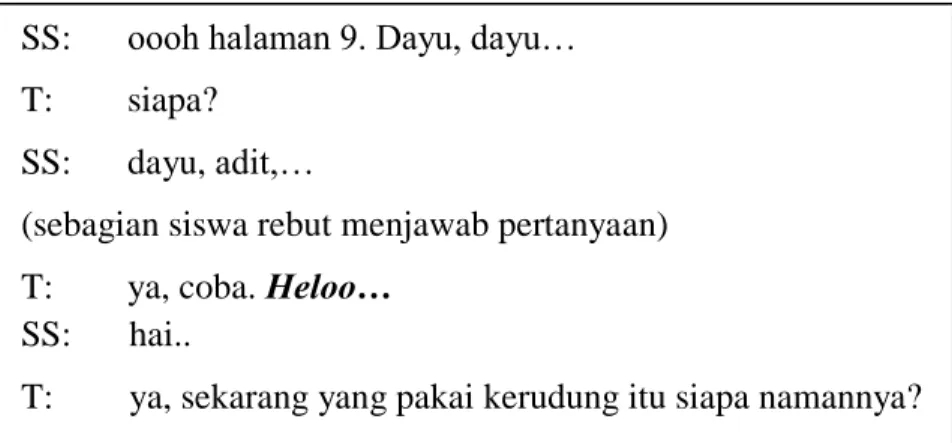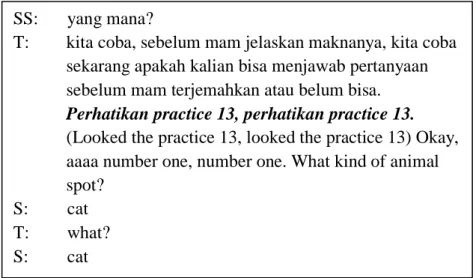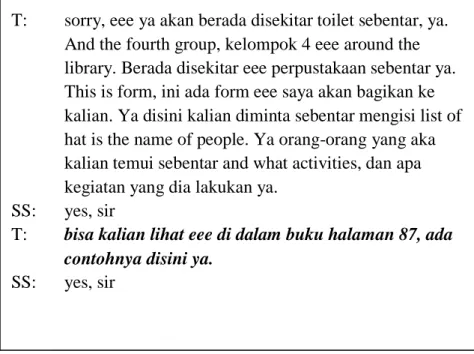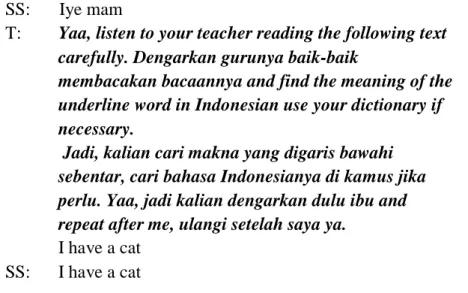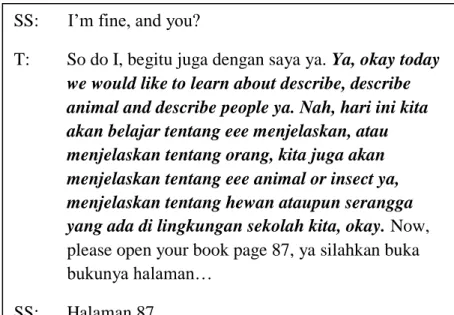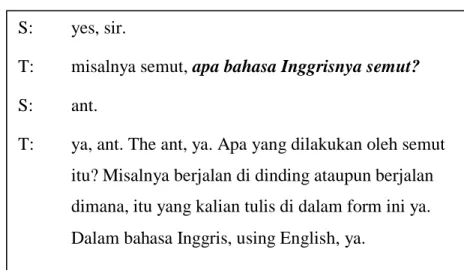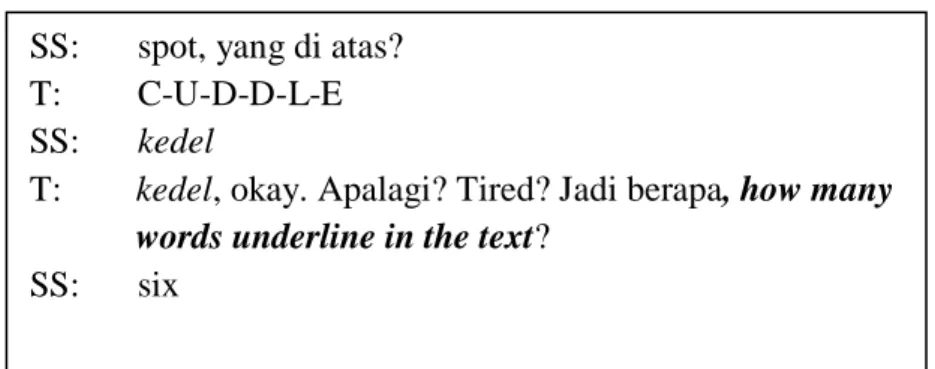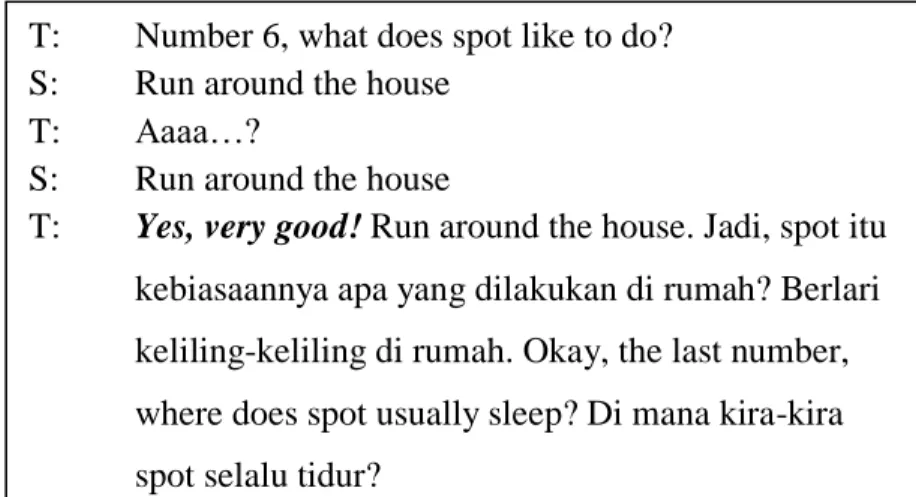Judul Skripsi: The Effect of Teachers' Lectures on Students' Interest in Learning English on Eighth Grade Students in SMP Muhammadiyah Limbung (A Descriptive Research). The effect of teachers' lectures on students' interest in learning English on eighth grade students in SMP Muhammadiyah Limbung. This study aimed to find out: (1) the type of teacher speech used by the English teachers on the eighth grade students of SMP Muhammadiyah Limbung, (2) the effect of the teachers' speech on the students' interest in learning English.
The result of the research showed that (1) there are two types of teacher speech used by teacher A and teacher B in the learning process, such as direct talk and indirect talk. It is possible to observe the positive reactions of the students to the teachers' speech, which they used in relation to their interest in learning English. On the contrary, when language teachers talk less, this will greatly affect the lack of knowledge acquired by language learners, which should actually be derived from the teacher's explanation.
In the English classroom, teachers' conversations can act as a medium to achieve learning goals and are not limited to just the topic of the course. The Effect of Teacher Talk on Student Interest in Learning English in Grade 8 Students of SMP MuhammadiyahLimbung”.
Research Problem
In addition, the researcher investigated the effect of teachers' talks on students' interest in learning English. The researcher used questionnaire to know the students' interest about the teachers' talks in teaching and learning process in the classroom. How the teacher interacts with the students conveys the intrinsic values for the subject.
In the observation made, the teacher mainly reformulates and draws conclusions from the ideas or answers of the students. It can be seen when the teacher said, "ya, jadi warnanya orange, jadi bukan dasarnya hitam putih tapi dasarnya orange" [ya, the color is orange, not black and white but orange] based on the students' answer. It can be seen when the teacher said "yes, the ant, yes" based on the students' answer.
The effect of teacher talk in relation to students' interest in learning English could be known through the questionnaire, from the questionnaire it was found that the students responded positively to the teacher talks used by the teacher. In addition, students like to receive feedback, praise, motivation and appreciation from the teacher in the learning process. For the fifth statements, most of them were interested when the teacher corrected their mistakes.
For the sixth statement, most people were interested when the teacher praised their answers. For the seventh statements, most were interested when the teacher provided motivation during the learning process. For the ninth statement, most of them were interested when the teacher gave appreciation for their answers.
For the twelfth statements, most of the students were interested when the teacher answered their questions. For the fourteenth statement, most of them were interested when the teacher gave the question and answered it. This supports Aisyah's (2016) findings that most of the students like when the teacher gave answers, praise, motivation and appreciation by the teacher in the learning process.
Another problem statement concerned the effect of teachers' speech on student interest.
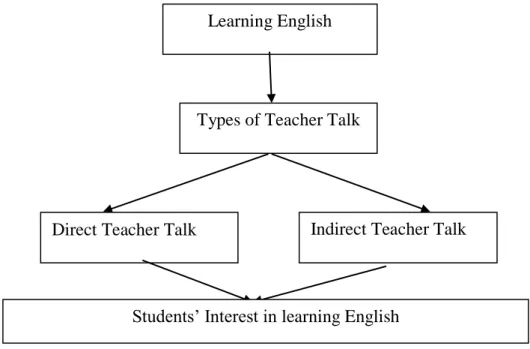
Objective of the Research
Signicance of the Research
Scope of the Limitation
REVIEW OF RELATED LITERATURE
Some Pertinent Ideas
- Students’ Interest in Learning English
Acknowledging students' feelings can build a classroom environment that supports the teaching and learning process, as well as builds confidence and engages students in the teaching and learning process. When students feel valued, they are likely to have a good time in the teaching and learning process, thus creating a comfortable environment. For example, using learning innovation in relation to students or enhancing learning with innovation would increase students' interest in the learning process.
The interest that the researcher observed in this research is expressed interest, where the students through the questionnaires expressed their like or dislike of the teachers' talk about teaching and the learning process. According to Junaid i Yusniati (2015), there are two factors that can affect students' motivation as well as their interest in learning, they are: internal and external factors. Internal factors such as the students' attitude to a subject and the students' aptitude or language ability.
As a teacher, it is important to recognize when students' interest is waning and respond to their lack of engagement in classroom activities (Sirajuddin (2013). Activities with high credibility within the profession must ensure students' interest in the subject.
Conceptual Framework
Teachers are advised to explain to the students what would be an outstanding contribution to the subject to give them a goal to aim for.
RESEARCH METHOD
- Research Participants
- Research Variable
- Research Instrument
- Data Collection
- Data Analysis
From the extract by teacher B, it clearly shows that the teacher explained about the material to the students. In the extract by teacher A above, the teacher accepted the students' feeling by saying “yes, I give you 20 minutes, say beri waktu 20 menit ipapi regu ya” [I give 20 minutes to each group yeah]. The teacher's action showed that the teacher was aware of the students' feeling when the student said "20 mo pak" [only 20 minutes sir].
Furthermore, 70.83% strongly agreed and 29.16% agreed that the students were satisfied with the teacher's explanation in the learning process. There were 50% of students who strongly agreed, 45.83% agreed and 4.16% were undecided that students like it when the teacher gives answers. 79.16% of students strongly agreed and 20.83% of students agreed that students like it when the teacher gives praise and encouragement to students.
With the statement that students like it when the teacher gives them motivation during the learning process, 50% of the students strongly agreed, 41.66% agreed, and 8.33% were undecided. 8.33% of students strongly agreed, 8.33% agreed, 12.5% were undecided, 29.16% disagreed and 41.66% strongly agreed that students do not like when the teacher responds to the student's answer. 45.83% of students strongly agreed, 50%% agreed and 4.16% were undecided that students like it when the teacher answers.
There were 79.16% of students who strongly agreed, 12.5% agreed, 4.16% were undecided and 4.16% strongly disagreed with the statement that students like it find if the teacher provided motivation during the learning process. There were 54.16% of the students who strongly agreed and 45.83% agreed with the statement that the students liked it when the teacher expressed appreciation for the student's answer. There were 83.33% of the students who strongly agreed, 8.33% of the students agreed and 8.33% were not sure that the students liked it when the teacher gave directions.
Based on the audio recorded, asking questions was the most frequently used category by teacher A. For the third statements, most of them were interested when the teacher shows an example during the explanation. For the eighth statements, most of them were interested when the teacher gave the opportunity to find their mistakes.
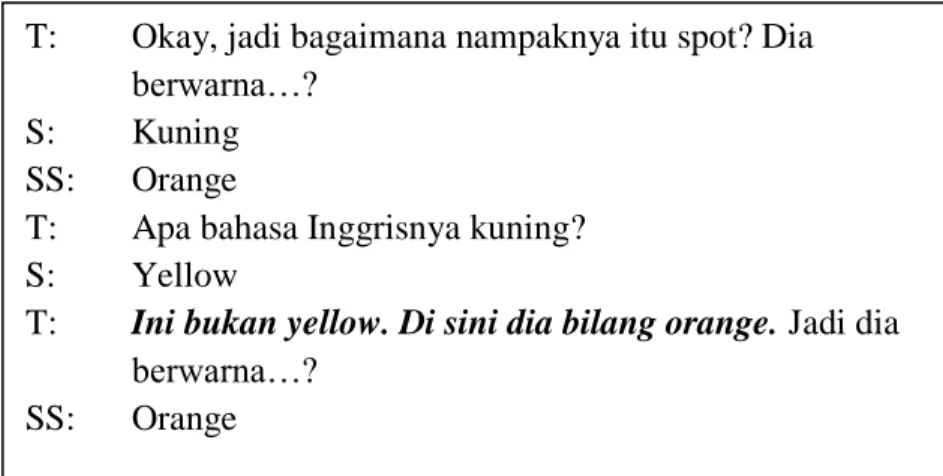
FINDINGS AND DISCUSSIONS
Discussions
Furthermore, audio recorded data helped the researcher to collect the teacher talks in the class. Therefore, after analyzing the audio recorded data, it was found that the type of teacher talk used by both the teacher was direct and indirect talk. The students also responded positively to the direction the teacher used and it was interesting for the students.
From all the explanation above, we can conclude that the students of class VIII.2 responded positively to the teacher's speech. Teacher B, as a teacher for class VIII.2, used all categories of teacher speech during the learning process. From all the explanation above, we can conclude that the students of class VIII.8 responded positively to the teacher's speech.
Teacher A as a teacher of class VIII.8 used all teacher conversation categories during the learning process. The first problem formulation concerned the types of teachers' speech used in the learning process. The result of this research can be used by the English teacher in the classroom as a reminder to use the type of teachers' speech in the learning process.
As it can be seen that all categories of teachers' talk are found in the learning process. Jadi yang kalian kerjakan di buku latihan just practice 13 and practice 16. T: yes, I think that's all for meeting today, maybe we will continue our meeting in the next weeks and then you should collect your homework. 12 I don't like when the teacher answers what I asked 13 I am interested in studying the situation more.
CONCLUSIONS AND SUGGESTIONS
Suggestions
Iya okelah hari ini kita mau belajar tentang mendeskripsikan, mendeskripsikan hewan, dan mendeskripsikan manusia. Ada yang di taman, di taman sekolah kita, kelompok kedua ya kelompok kedua sebentar lagi di parkiran ya, di parkiran.
